The Breakdown
Pros
Cons
Some First Impressions
I have never worn an HJC helmet before or even tried on one while window shopping. So I was very interested in testing the new generation F70. Reading up on this new breed, I quickly discovered that it was a unique blend of helmet technology in a comms ready helmet. But the most significant factor was that HJC offered all of these benefits at an amazingly affordable price.
When I open the box and pull out a new helmet, my first “test” is to check out the weight. I don’t even think about it as I hold it in one hand and begin to evaluate how it compares to the rest of my collection.
In the case of the F70, it is about on average for a lightweight helmet.
My next consideration is always the ventilation. Living in a hot climate, airflow is critical. And the F70 looks like it will offer some good circulation with two intakes on the chin bar and two on the crown.
Now it’s time for the first test fit. A few thoughts:
- I wear an extra small in most helmets and the sizing appears to be very true for the interior of the helmet.
- I was able to secure the D-ring chin strap and have the F70 secured in a comfortable and safe position on my head.
- I also greatly appreciate a glasses friendly helmet as I wear prescriptions all the time. Both my regular glasses and my Oakley Quarter Jackets were easy to slide through the glasses channel.
- The HJ-32 shield is very user-friendly with two large triangular tabs to raise the shield easily with either hand.
- The sun visor lever is located at the base of the helmet on the left side and slides very easily. When the HJ-V9 sun visor is not in use, the lever locks securely in the forward position.
- The helmet comes with the breath deflector installed and I left it in for the first few rides as it is winter time here in Phoenix and screen fog is always an issue at this time of year.
Even before taking off on my first ride, I began to notice the overall size of the helmet. While the interior is a true extra small, the helmet shell feels fairly large and oblong. I can insert my hand up into the chin area and feel about a 3” gap between my chin and the inside front of the chin bar. And while I don’t think that this will decrease the safety of the helmet from a fit perspective, I think it could be an issue when I am riding and need to turn my head to the side before changing lanes or when turning.
Shopping Now? We Recommend:
webBikeWorld works closely with Revzilla and Amazon to provide our testers with quality products to review. While we have an affiliate relationship and receive a commission from items purchased, this addition comes at no additional cost to you. It is the primary way we pay for our site and reviewers.
RevZilla
The First Ride
The F70 was very comfortable as I strapped it on and got ready for my first ride. I did however quickly become aware of the size of the chin bar. I had a limited range of motion when looking to the left or right as the front of the chin bar hit my shoulders.
The more I test helmets, the more conscious I have become of the shape of the shield and the chin bar as I also found this situation in the Matrix Alpha Streetfighter helmet. Some shields are almost vertical when closed while others have more of a slant much like a car windshield. I have found that I tend to prefer the more vertical shield as it makes the front of the helmet more compact. As you can see in the picture below, the HJC F70 has a very pronounced slant to the shield.
I always begin my first test ride along the same route through my neighborhood. It provides me with an opportunity to get used to the field of vision in very familiar surroundings. And it provides both left and right turns in a very controlled environment.
By the time I had completed this 10 – 15-minute ride, I was comfortable with the feel of the helmet, the vision with the breath deflector and the shield, visor, and vent manipulation. And I had a mental note to take the deflector out for the next ride to compare the field of vision with and without it installed.
Being that it was a cool morning, I was able to get a really good feel for the airflow through the helmet with the various vents open and closed. Opening the chin bar vents allowed a burst of cool air in, that wrapped around my face. And while it was not what I would want in the wintertime, I knew that this airflow would be very welcome in the warmer months.
Opening the crown vents on the top of the helmet also provided a blast of cool air that wrapped around the top and back of my head.
The ACS, Advanced Channeling Ventilation System, is not just some fancy term that HJC has created. The airflow through this helmet is well designed and really does move air throughout the helmet to reduce heat and humidity.
I started off with the optional chin curtain installed. It is a small pad that can be attached to the interior chin curtain to block any air from coming in between your neck and chin. Two pieces of velcro keep the added pad in place.
Because this chin bar is so large, the added pad is a great idea for cooler weather rides, or if you are as cold adverse as I am. The added curtain was very effective in blocking the cold air. And I was able to remove it and put it in my pocket while riding to determine exactly how well it had been functioning.
Chin curtain installed.
And removed.
In addition to increased airflow with the added chin curtain removed, I also noticed a slight increase in the sound. But nothing that I would consider to be noisy or too loud.
With all of the vents closed and the main shield completely closed, the F70 is a very quiet helmet. Even when the vents were open, the sound was not overpowering. I do not have the SMART HJC 10B system installed but I am certain that being a comms ready helmet, extra attention was given to soundproofing the helmet. And the extra effort paid off.
The final item on my first ride checklist is always the fit of the helmet at the back of my neck. I normally wear a jacket with a large back protector, and in the past, I have had an issue with the helmet hitting the top lip of the back protector and limiting my range of motion when in a very aggressive riding position. This was not an issue with the F70. I was able to lean forward behind my windscreen and tilt my head up enough to easily see without any contact of the helmet with my jacket.
As you can see below, the R70 fits very well with the top of my Alpinestars Core leather jacket.
Overall, I came away from the first test ride eager to get a few more rides in with the HJC F70 and dig deeper into the benefit and any drawbacks that I might discover as I spent more time in it. The areas that I know I want to explore in much more detail are the size of the chin bar and potential mobility issues it creates, the size of the shell in relation to my head and how that impacts aerodynamics of the helmet at speed, and any sound or vibration issues when riding at highway speeds.
More Rides, More Info
Over the next few trips out in the F70, I was able to focus more on the added features of the helmet. I have to say that I really like having the internal sun visor. It took me a few tries to get used to the location of the lever for the visor though. Most of my other helmets have the lever integrated on the side near the pivot point of the main visor, but the F70 lever is located at the base of the helmet on the left side. However, once I learned the location, it was easy to use and a favorite feature.
I also want to add that even though I am not a huge fan of the size of the eye-port with the breath deflector installed, I do like that the sun visor almost meets the breath deflector providing amazing sun protection. There is not really any glare or light coming up under the visor thanks to the breath deflector so it is very comfortable to ride in clear glasses.
When riding at highway speeds, I was very happy with the airflow over the F70 when facing forward. And it was easy to tuck in below my windscreen and feel very stable. There was no bobbling of the helmet.
But when I turned my head, I did notice that the large profile of the helmet shell and the chin bar caught a lot of wind. And while this is to be expected of any oval-shaped helmet, I think that the larger shell size makes this feeling more pronounced when you wear a small or extra small helmet.
Reasonable Pricing
The HJC F70 is available at the Revzilla website and is currently listed between $242.99 and $256.49 USD depending on the size and color that you select. The HJC website offers the F70 ranging from $269.99 to $279.99 USD. And this very reasonable price gets you a comms ready helmet with dual visors so you are not going to get nickel and dimed to death upgrading the F70.
Fit, Comfort & Sizing
The F70 is an intermediate oval helmet and fits a slightly wider head. This is the most common shape for a helmet and makes it a good option for most riders.
The chin strap offers the standard double D-ring and strap and is very easy to secure. Muscle memory takes over as soon as you reach for the strap and it is secured in just a second. I did notice that the larger opening with the extended chin bar had the cheek pads sitting a little lower on my face than some more compact helmets but the fit was comfortable and secure.
The padding in the F70 is very comfortable. Because I wear an XS, the cheek pads are about 2 inches thick, which adds to the comfort initially and to the protection in the event of an accident.
The MultiCool™ material used for the lining is anti-bacterial and provides superior wicking. This adds to the rider’s comfort on a hot day and also means that the pads will dry more quickly in warm weather. There is nothing worse than trying to put on a wet sticky helmet that has not dried out completely from the last ride. And after a few hot days, riders can remove the crown and cheek pads which are fully washable.
And one last note that is great to know but you hope you never need, the cheek pads offer an emergency quick release. Emergency first responders are trained to look for these cheek pad quick-release tabs so that they can be removed prior to removing the helmet. This safety feature helps to avoid any movement of the rider’s head and neck when removing the helmet to render first aid.
The removal of the pad for washing or installing speakers is very simple. There are the fairly standard three snaps and a couple of plastic tabs to line up along the base of the helmet. The crown pad has a series of curved tabs at the top of the viewport that makes the installation very simple and provides a precise and secure fit.
I had no issues with any tight areas in the helmet or places that rubbed or seemed to be ill-fitting. I did feel that the helmet was secure and safe but it was not too tight to be comfortable from the first ride. My only concern would be that these soft pads could begin to wear more quickly than a less soft pad. But replacement pads are easy enough to purchase and install if that happens in the future. The pads are sold on Revzilla for $31.99 USD.
Shopping Now? We Recommend:
webBikeWorld works closely with Revzilla and Amazon to provide our testers with quality products to review. While we have an affiliate relationship and receive a commission from items purchased, this addition comes at no additional cost to you. It is the primary way we pay for our site and reviewers.
RevZilla
The HJC F70 is available in sizes XS-2XL. To accommodate this size range, HJC uses two shells for the F70 helmets. The smaller shell is used for the SX, S, and M. The larger shell is used for the L, XL, and 2XL. Being on the smaller end of the scale with my XS, the shell does feel a bit big and cumbersome. But I would imagine that a small or medium would feel more proportionate.
In previous helmet tests, I have found that the manufacturers who elect to use three shell sizes offer a more proportionate option for riders who wear the small or extra small sizes, such as in the case of the Icon Inky that I tested.
Only a very few manufacturers offer three shell sizes to provide a better fit on the smaller helmet. So I would recommend that anyone who wears an XS verify the shell sizing to make sure they find the overall size of the helmet to be comfortable. Wearing a helmet with an oversized shell can make you feel like a bobblehead as you are cruising down the road. And the feeling only gets worse when you are riding in windy conditions or are turning your head at speed.
Safety
HJC has invested a great deal of time and money in making the F70 a very safe helmet for riders who are shopping in the under $300 price range.
The HJC F70 helmet is both DOT and ECE approved. This helmet is built using a fiberglass composite shell to provide durability and while still staying in the lightweight range for a full-face helmet. Also, here is a one-touch actuator switch to drop the sun visor without any distraction while riding.
And all of this is strapped to your head with a standard D-ring chin strap closure. This might not sound important, but in the event of an accident, this strap and closure will keep the helmet securely on your head. And when first responders arrive, the quick release pads will allow them to remove the pads and then the helmet without moving your head or neck.
Field Of Vision
As I mentioned before, the chin bar is rather large on the F70, and with the breath deflector installed, the field of vision shrinks even more. With the deflector, there is an opening at the center of the eye-port that is about 2.5 inches tall. Without the deflector, that view area increases to 4 inches. While both of these are functional, it is something to consider if you tend to move your eyes more than you move your head to see the road in front of you. And for older riders like myself who wear progressive lenses, this smaller eye-port can take a little time to get used to.
I rode with the breath deflector installed and without it. And while I did appreciate the benefit of not fogging up my shield in the cooler weather, I will admit that I did like the increased field of vision when the deflector was removed. Fortunately, most of my riding will be in warmer weather, but when winter does arrive, I like knowing that I have the option to quickly install the breath deflector.
The Visor
The full screen on the F70 is clear and locks in a completely open or closed position. The good-sized triangular-shaped tabs on each side of the shield make it easy to adjust with one hand in a quick motion. The retention system on the shield also allows for a variety of settings in between fully open and fully closed. I was able to adjust it to multiple degrees of open screen and found that each one was very secure. This is a great feature for added air in warmer weather or a fast air exchange.
I was also impressed by the tight seal when the shield was completely closed. I thought at one point that I had the screen closed but I could hear a bit of a whistle coming from somewhere. First I checked all of the vents and found them to be closed. I was actually a bit bummed thinking that there was a leak and that the helmet must always have this sound and I was just going slow enough to hear it.
Fortunately, I tapped the shield and discovered that I had left it open just a crack and that was causing the sound. Once I seated the shield, the whistle was gone and I was again impressed by the lack of road noise inside the F70.
Any helmet that offers an integrated sun visor is a huge bonus for me. I like being able to ride in my regular glasses and not my sunglasses. That way I am not carrying around an extra pair of glasses. The F70 has a very large sun visor that does a great job of blocking out bright light. I never found myself squinting because of light finding its way in under or around the sun visor.
And just a side note, the F70 is considered to be a lightweight helmet at 3.65 pounds. You will not find too many other helmets at that weight that offer an integrated sun visor, let alone one as large as this one.
Air Flow
Airflow is critical for any helmet when you live in a hot climate. It only takes a minute or two in a helmet to begin sweating, increasing the temperature inside your helmet, and experiencing annoyance of sweat dripping into your eyes. And as soon as that happens, you are putting your safety at risk.
Most riders would tell you that they look at a helmet as a piece of equipment that provides protection but not one that can actually create a safety hazard. (That is, assuming that you have a properly fitting helmet that has been well maintained and is properly strapped to your head.)
However, as soon as you are distracted by dripping sweat and excessive heat, your helmet has become dangerous to your health and safety. With poor ventilation or no ventilation, the temperature in your helmet will increase very quickly as will your potential for harm. Temperatures between 105 degrees and 130 degrees Fahrenheit can cause heat exhaustion in just minutes, making you dizzy, lightheaded and even causing you to blackout.
The HJC solution to the dangers of a hot helmet is their Advanced Channeling Ventilation System or ACS. The system is designed to draw air into the front of the helmet, across your head and out the back exhaust ports. Not only does this system keep your head cooler, but it also removes the moisture and humidity from inside the helmet.
On the F70, there are two intake vents on the chin bar. The lower vent slides down to open the vent while the upper tilts to create the vent opening. A gentle touch to the bottom of the cover opens the almost 3-inch wide top vent. Then tap the top of the vent cover to close it. I found that these vents were both very easy to locate with a gloved hand and that when open, I could instantly feel the cool air across my chin and up my cheeks.
There are also two vents located on the top of the helmet in the crown area. These are your fairly typical slide vents that move toward the back of the helmet to open the vent and forward to close it. I had only been wearing the helmet for about 3 minutes the first time I reached up to open the vents. I was very happy to find that they are very easy to locate and to open with a quick motion. And once they were open, the temperature inside the helmet quickly dropped. With all of the vents open, I could really feel the air being channeled over my head and out the back of the F70.
The Verdict?
For my first experience with an HJC helmet, I am very impressed by the F70. I have a new appreciation for HJC engineering and the design features such as the Advanced Channeling Ventilation System and the fiberglass composite shell.
There were also many small details about the F70 that displayed the overall attention to detail that HJC devoted to this helmet. Things like the tight seal on the face shield, the locking of the sun visor lever and the easy to line up tabs on the crown pad are all very impressive to find on any helmet. @hen they are included on a helmet that costs about $250 USD, then I am really impressed.
I bought my first street helmet in 1986 and I paid more for it than the cost of this loaded HJC F70 that I am certain provides much more protection and comfort. If you are looking for a safe and very functional street helmet then check out the F70. The extremely reasonable price is just an added bonus.
Pros
- Fiberglass Composite Shell
- DOT and ECE Certified
- HJ-32 Main Visor with 95% UV Protection – Pinlock Ready
- HJ-9V Drop Down Sun Visor
- One-Touch Visor Deployment Button
- Removable and Machine-Washable Cheek and Crown Pads
- MultiCool Interior
- Emergency Quick Release Cheek Pads
- Aerodynamic
- XS-2X Sizing
- Quiet
- Insets for Speakers
- Bluetooth Ready Supports SMART HJC 10B or 20B Bluetooth Systems
- Affordable
- Breath Deflector And Chin Curtain Included
- D-Ring Chin Strap Closure
Cons
- Larger chin bar
- Big Helmet Shell For XS Sizing
Specs
- Manufacturer: HJC
- Price (When Tested): $242.99 – $256.49 USD
- Made In: Vietnam
- Alternative models & colors: White, Black, Stone Grey, Semi-Flat Black, and Semi-Flat Titanium
- Sizes: XS, S, M, L, XL, XXL, XXL
- Review Date: February 2020
Shopping Now? We Recommend:
webBikeWorld works closely with Revzilla and Amazon to provide our testers with quality products to review. While we have an affiliate relationship and receive a commission from items purchased, this addition comes at no additional cost to you. It is the primary way we pay for our site and reviewers.

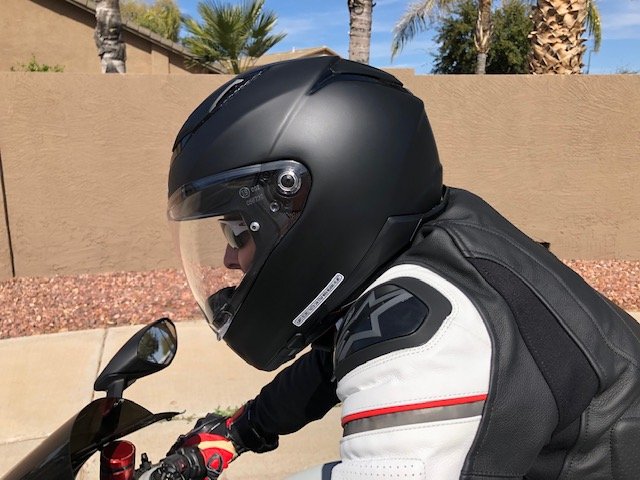
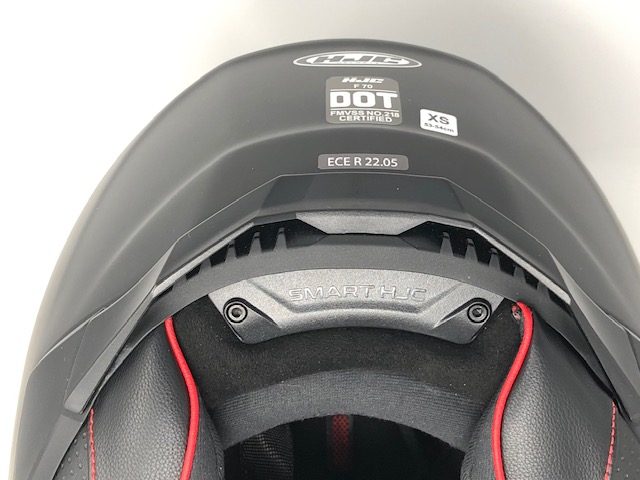

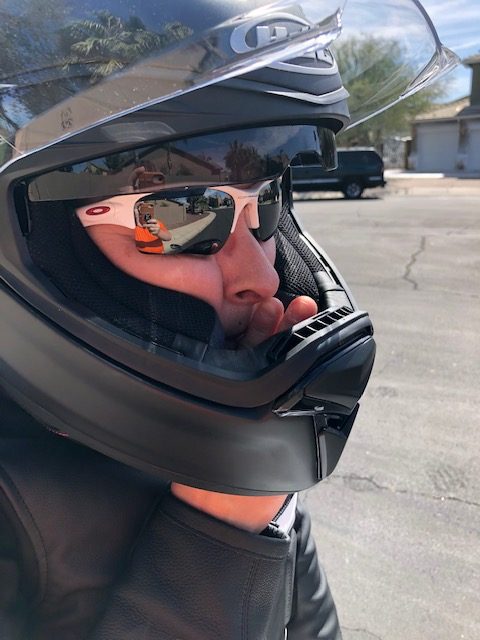
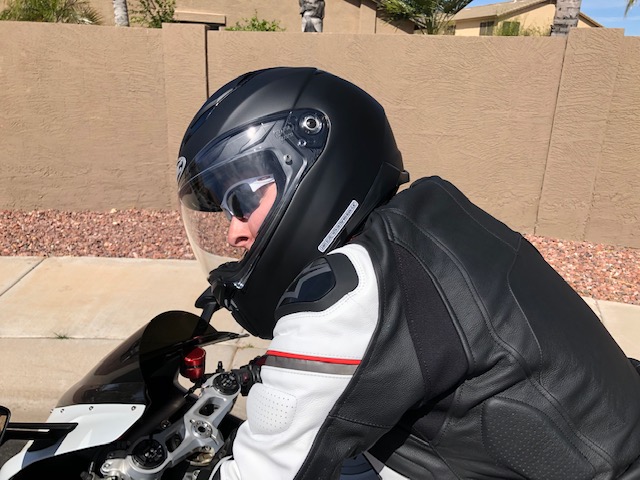

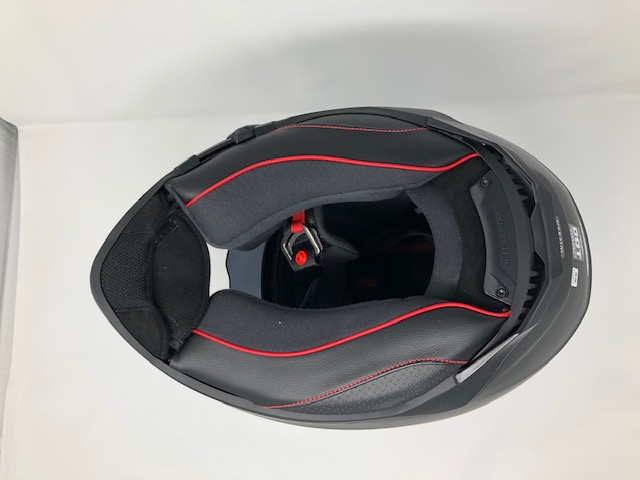
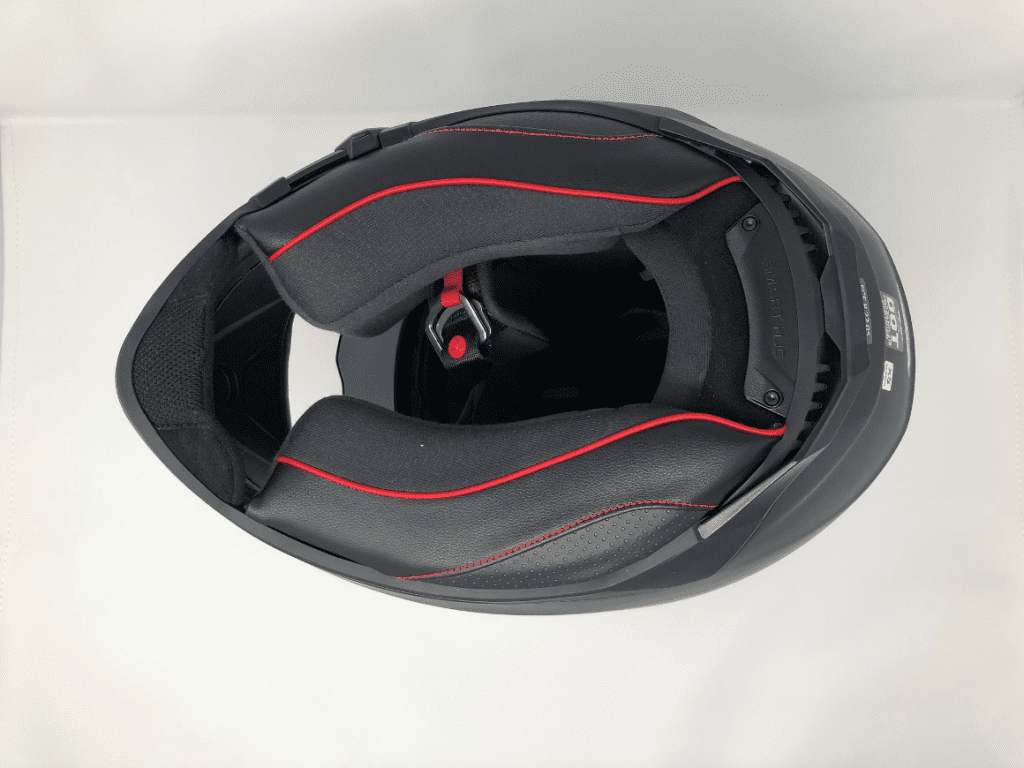
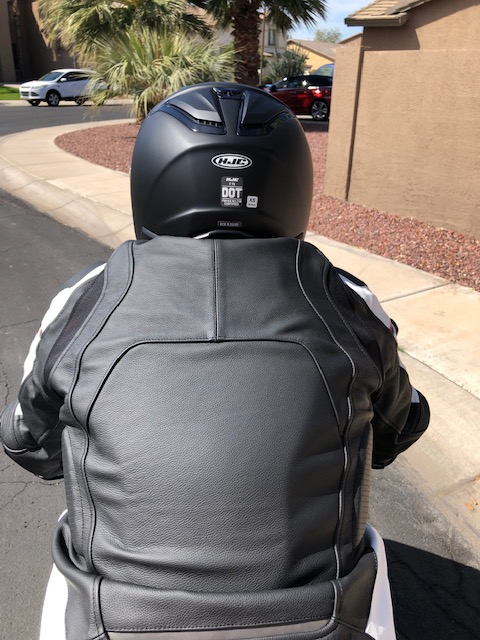
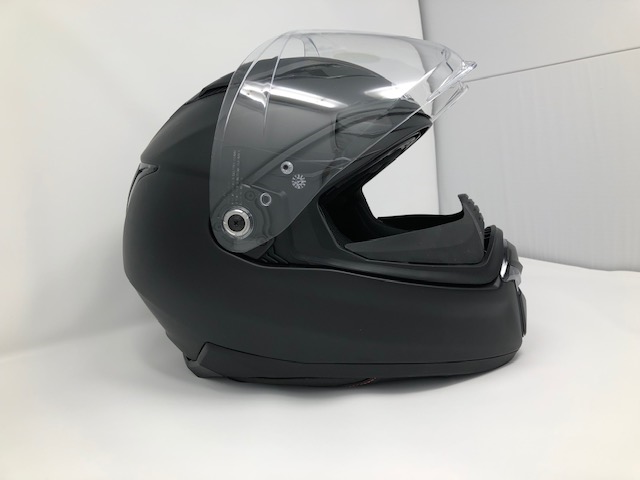
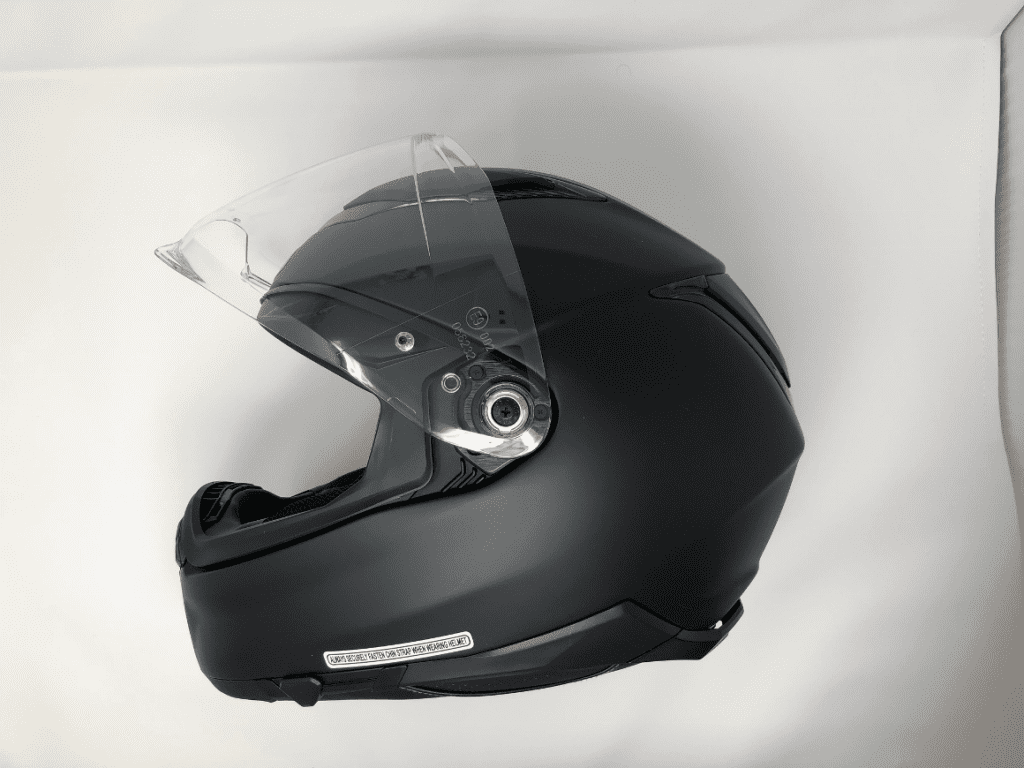
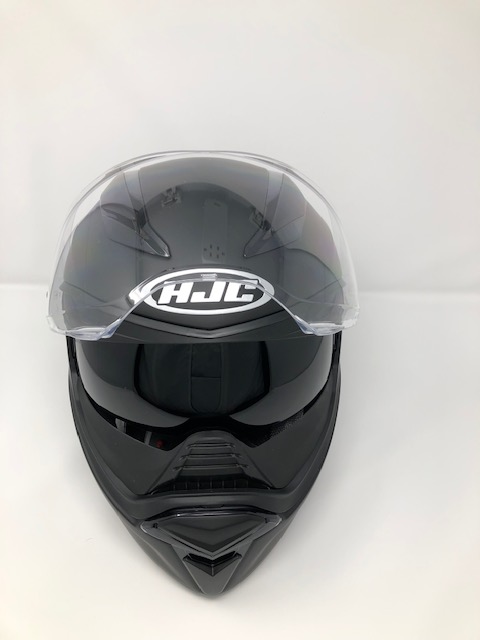
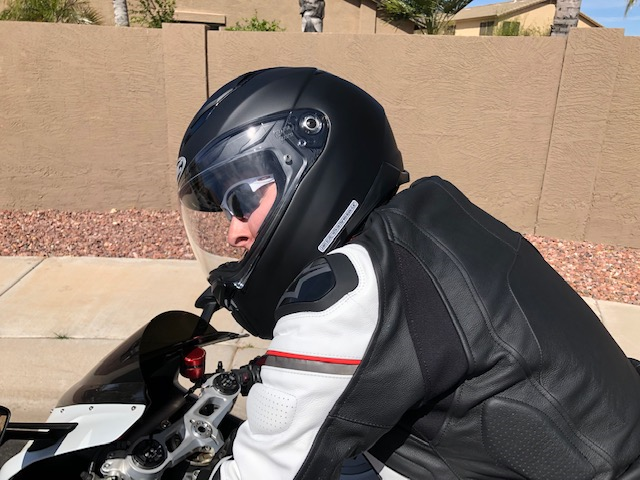
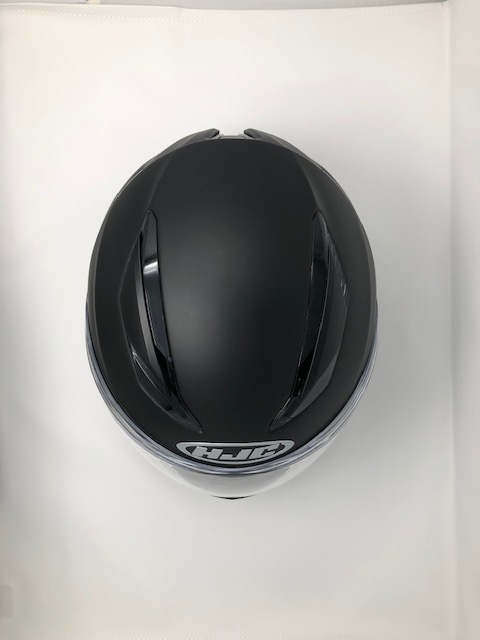
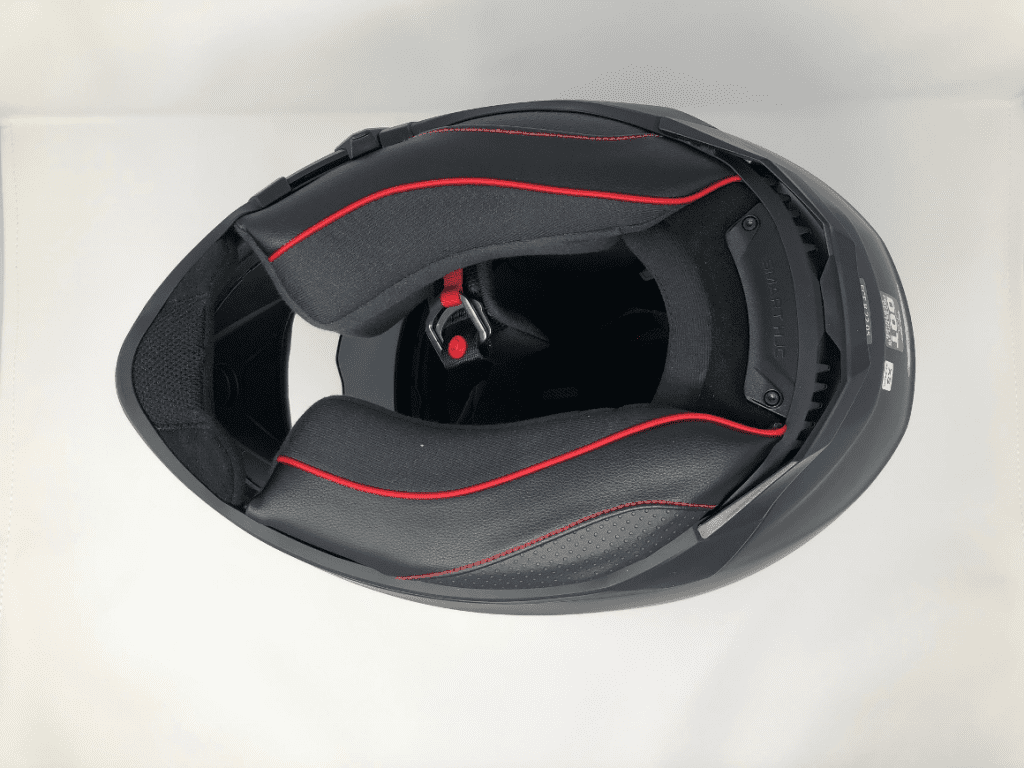
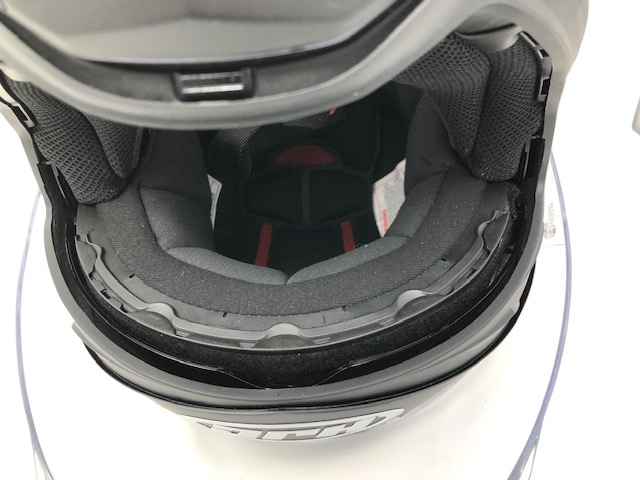

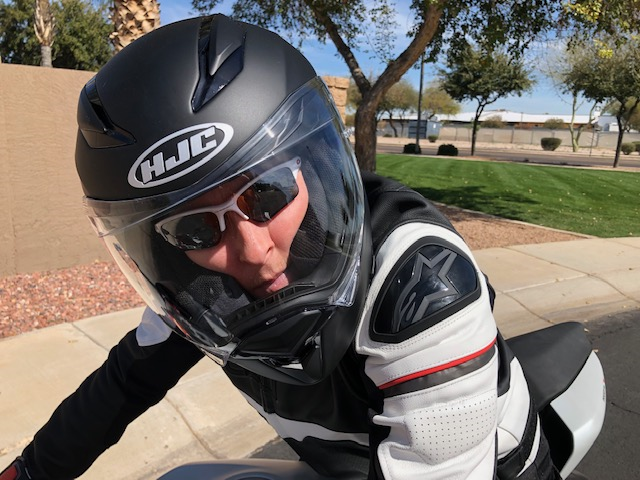
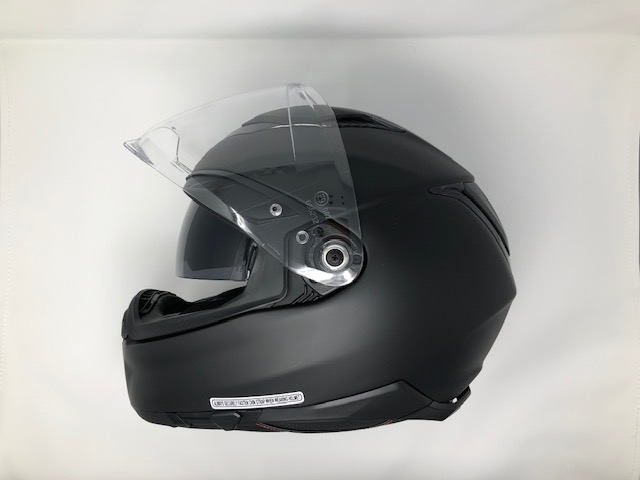
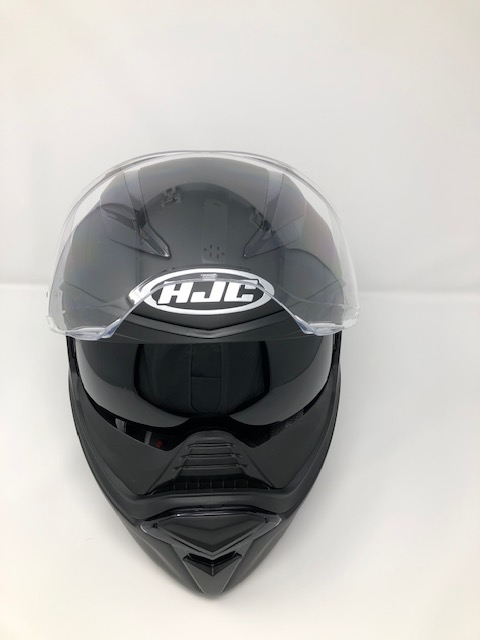
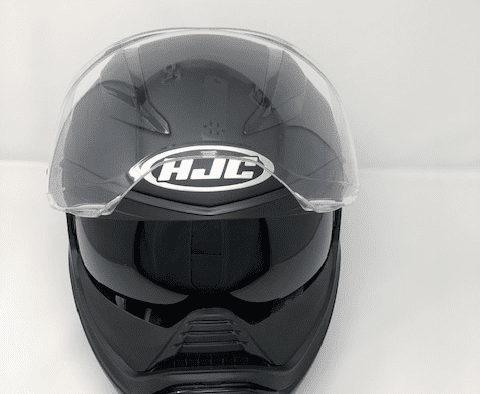


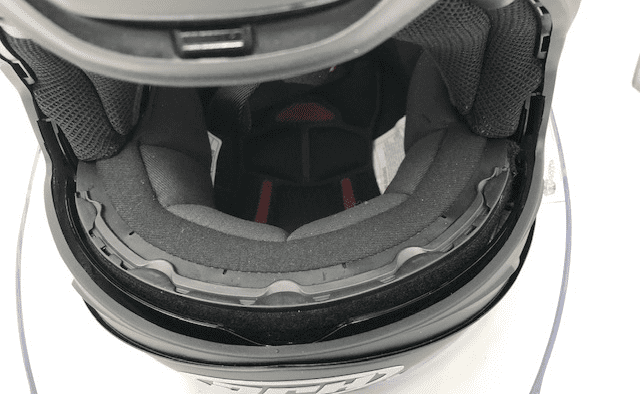
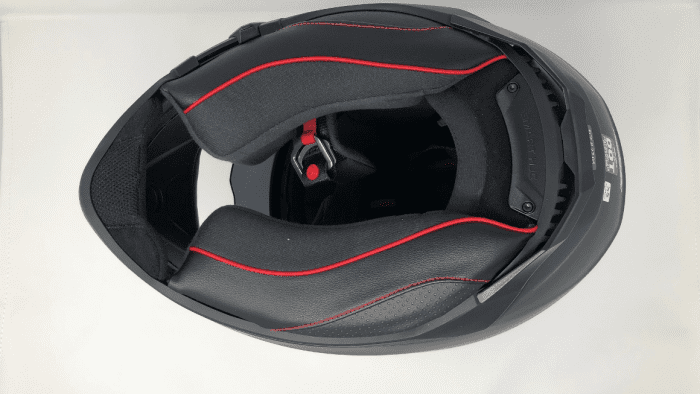

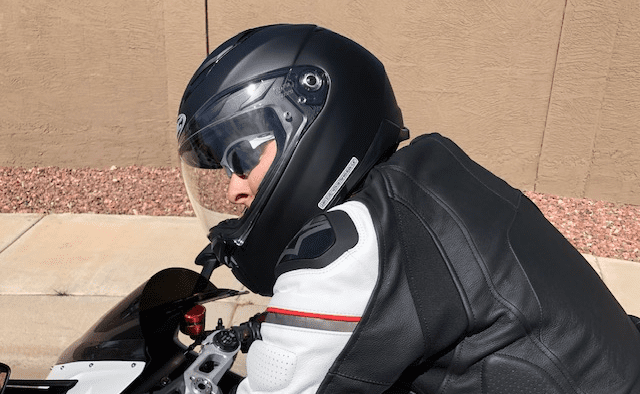
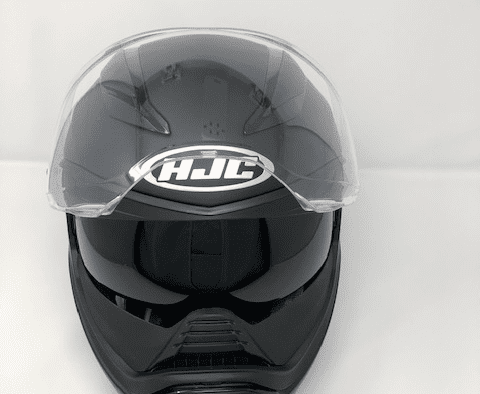
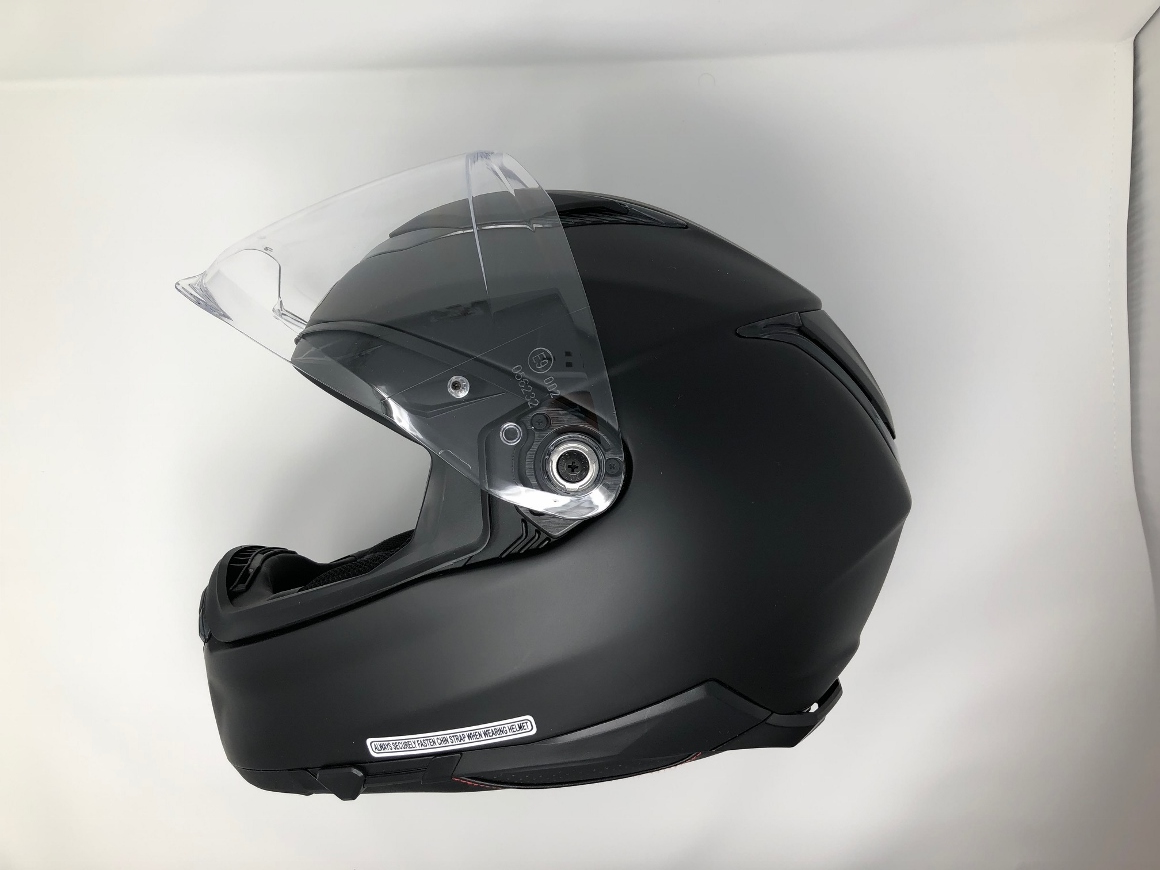
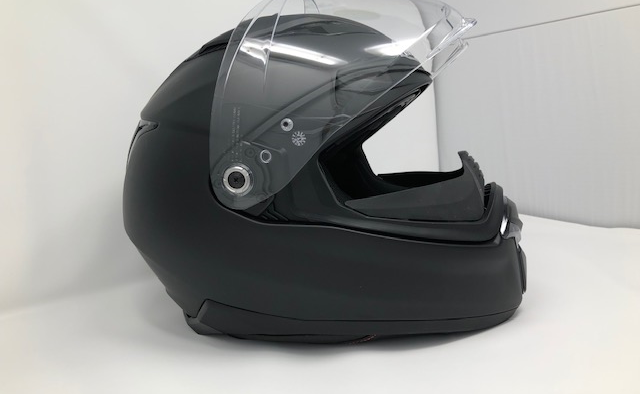
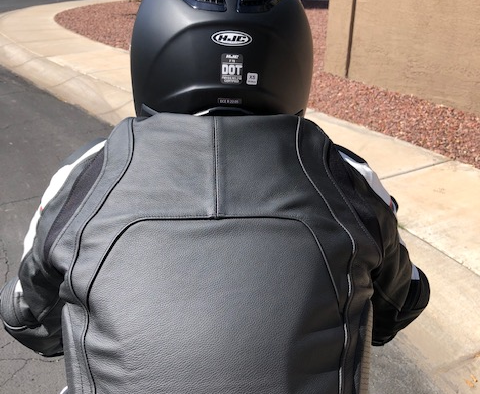

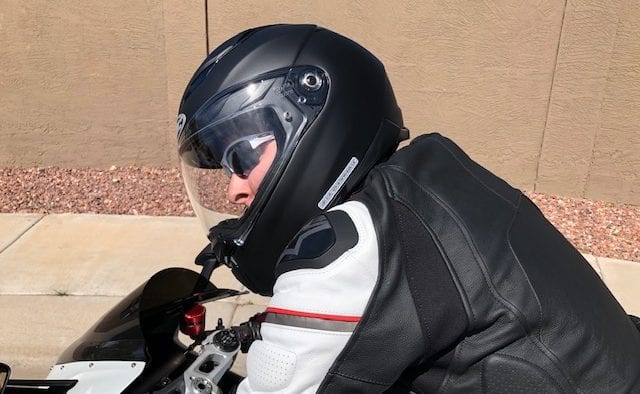




noise????No mention of it,which to me is one of 3 most important factors in choosing a helmet!
noise????No mention of it,which to me is one of 3 most important factors in choosing a helmet! EDIT….After a couple rereads you did say it was fairly quiet …..no comparison to any other helmets….